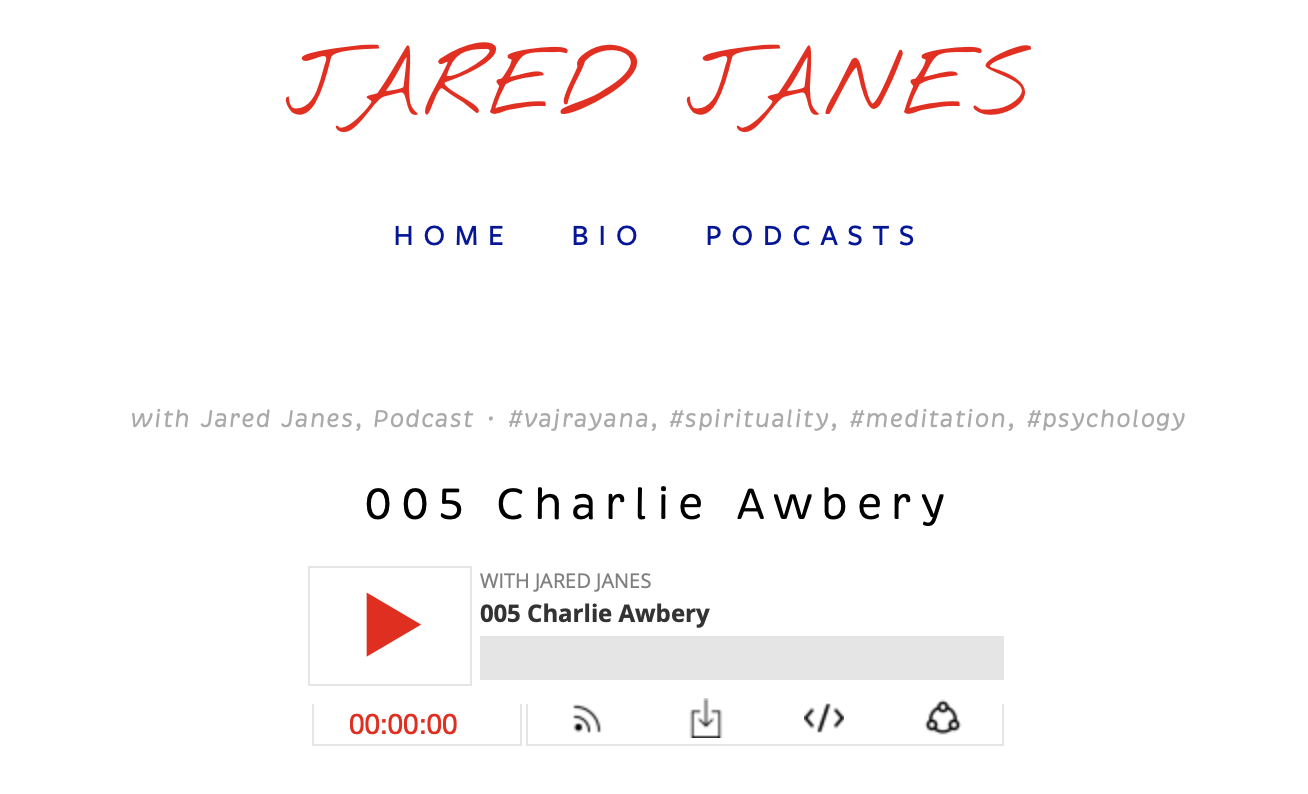Jared Janes is my co-founder at Evolving Ground. We have a strong friendship that predates our project to bring Vajrayana to a contemporary audience and we’ve enjoyed many meandering, wide-ranging discussions with each other. One of my favorite pastimes is interesting, exploratory conversations and Jared does this par excellence!
We’ve talked so much together about the differences between renunciative and transformative attitudes, how these affect meditation experience in the long-run, and where therapy fits. Our understanding has matured through conversations with community members and in one-on-one coaching with apprentices and pupils during the first two years establishing Evolving Ground. We decided to record more of our conversations as we often address questions at the heart of Vajrayana’s encounter with contemporary society—its relevance for personal practice and societal influence.
One of the most frequently asked questions in Evolving Ground is: “How is opening awareness different to other meditations?” We’re gathering a collection of resources to answer that question and this conversation is one of them.1
In this conversation we reflect on our first awakening experiences and the impact these experiences had on our lives and relationships. Then, we explore practices and results from different spiritual vehicles, life-affirming practices and views, and the illusion and danger of perfection. We wrap things up by talking about the goals of therapy and spiritual practice and how they can impact each other in helpful and unhelpful ways.
The next section in the page is a summary of the discussion with a rough timeline. You can listen to the podcast here:

Content and timeline
0 to 15 minutes:
Our first awakening expriences - Charlie exploding in India while Jared was still in diapers - how meditation can lead to dissociation
15 - 30 minutes:
Jared’s equanimity experience - capacity to laugh at oneself - lightness of attitude
30 - 45 minutes:
Stream entry compared to opening awareness - no self is not the starting point for tantric practice - description of spacious presence, the result of opening awareness meditation - description of the opening awareness method - not cutting off from sensation - approaching opening awareness with a background in concentrative practice
45 - 60 minutes:
Approaching opening awareness - the mahayana dissonance - bodhisattva ideal can be harmful
60 - 75 minutes:
Striving for perfection - how dualism characterizes the move into bad cult dynamics - therapy
75 - 90 minutes:
Overwhelm and egolessness - universal anxiety - understanding context & the worldy orientation - the risk that distancing from stimulation can prohibit engaged, enjoyable usefulness - discovering passionate involvement - exploding depression - when internal narratives become unimportant
Further reading
This guide to opening awareness (shi-ne) meditation gives practical instructions on how to establish a meditation practice or transition to opening awareness from other types of meditation. It includes a chapter on how to deal with all sorts of difficulties that might arise while you are attempting to remain uninvolved.
- 1.Others are my page on shi-ne meditation, my first discussion with Michael Taft for the Deconstructing Yourself podcast, and our “Sutra to Tantra” presentation for the Stoa.
